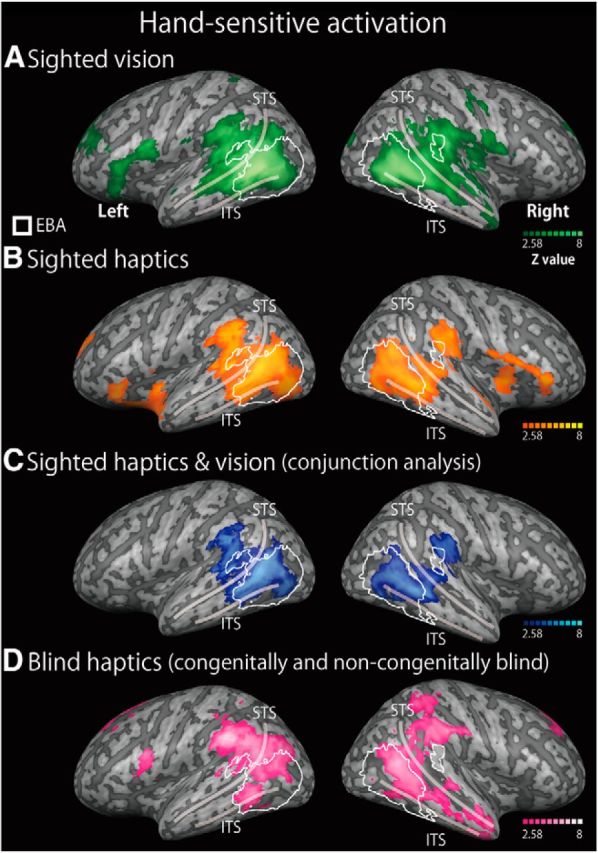Figure 3.

Hand-sensitive activation in sighted and blind individuals. We compared the activation during the recognition of hand stimuli with the mean activation during the recognition of other inanimate objects (the hand-sensitive activation) for three conditions: the visual task in the sighted group (A), the haptic task in the sighted group (B), and the haptic task in the blind group (both congenital and noncongenital) (D). The overlapping activation between the haptic and vision tasks in the sighted group (blue area) was evaluated statistically using a conjunction analysis (C). Regions within the white line indicate the EBA, which was defined by an independent visual-localizer task. The activation maps were thresholded at p < 0.05, corrected for multiple comparisons, with the height threshold set at Z > 2.58. The results were superimposed on a surface-rendered T1-weighted high-resolution MRI averaged across the subjects. STS, Superior temporal sulcus; ITS, inferior temporal sulcus. See Tables 3 and 4 for more details of peak coordinates.
